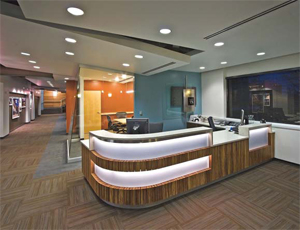...is a testimony to our goal of supporting our company and clients on a path to net-zero-energy consumption.”
FFKR Architects also made a bold move to increase energy efficiency in its office by recently installing photovoltaic solar panels on the roof of the former Bogue Building off 400 South in Salt Lake.



According to FFKR principal Mark Wilson, 68 215-watt panels were installed in October, along with three 5,000-watt inverters, which will generate nearly 15,000 watts of electricity. Wilson says the panels cost nearly $92,000 to install, but the expense was greatly offset by a $24,500 Rocky Mt. Power rebate, a $27,500 federal grant and a Utah State tax credit of $6,700, making the actual total expense a palatable $33,100. Energy produced by the PV panels will save the firm roughly $2,200 annually, for a 15-year return-on-investment.
“We had kicked the idea around for a couple of years and finally decided that it was the right thing to do,” says Wilson. “Because of the incentives, it was a smart financial thing to do. You get back 70% of the cost through rebates and tax credits – that’s a great deal.”
Wilson says an internet interface allows the firm to daily monitor exactly how much energy the firm is using, and how much energy is being produced from the PV panels. In addition, he feels that having the solar-roof panels visible to drivers on 400 South helps with the firm’s marketing objectives.
Spectrum’s office was designed with the concept that it would serve as an experimental facility to determine what practices and implementations offered the greatest returns. The result has been a high-performance, energy-efficient, 27,200-sq-ft space focused on occupant health, comfort and productivity.
“Much consideration went into creating an office environment that encourages open collaboration, sharing of information and coordination between design disciplines and production communication,” says Dave Wesemann, Spectrum vice president and principal electrical engineer. “With ingenuity and additional effort, our team was able to design an office with proven payback that is comfortable and friendly to the environment.”
“The thing that is interesting is we’re beating the ASHRAE 90.1 energy standard by 53%,” Greene adds. “We have a display when you come into the building that allows you to see how all the systems are saving energy. Each office is individually controlled. If it’s unoccupied, we’re not dumping cool air into that space. After a year, we’ll have enough data to say what the actual payback is. That’s part of the experiment.”
Taft says the fact that many owners, particularly in the government/public sector, have embraced the LEED-rating process signals that green building trends will continue to progress.
“Municipalities and government entities have embraced it,” says Taft. “It’s becoming the expectation rather than the ordinary. As (owners) raise the bar, the extraordinary of today will become commonplace. We have the ability to improve systems and improve building performance because we’re more focused on it.”



